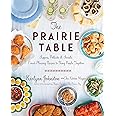Best Electric Hunting Knife Sharpeners in 2024: A Comprehensive Guide
Keeping your hunting knife razor-sharp is paramount for a successful and safe hunt. A dull blade is not only inefficient but also dangerous. While manual sharpeners have their place, an electric knife sharpener offers unmatched speed, consistency, and precision, especially when dealing with the demanding needs of a hunting knife. But with so many options on the market, choosing the right one can feel overwhelming. This guide will break down the key features to consider when selecting an electric hunting knife sharpener in 2024, helping you find the perfect tool for your needs.
Why Choose an Electric Sharpener for Your Hunting Knives?

Let’s face it, sharpening a hunting knife by hand requires skill, patience, and a steady hand. It’s a time-consuming process, and even experienced users can struggle to achieve a consistently sharp edge. An electric sharpener eliminates much of the guesswork. They offer several advantages:
- Speed and Efficiency: Sharpen your knives in a fraction of the time compared to manual methods.
- Consistency: Electric sharpeners provide a uniform sharpening angle, resulting in a consistently sharp edge every time.
- Ease of Use: Even beginners can achieve professional-level sharpening with minimal effort.
- Reduced Risk of Damage: The controlled nature of electric sharpeners minimizes the risk of accidentally damaging your valuable hunting knives.
Understanding the Importance of Torque

Torque, often overlooked, is a critical factor in electric knife sharpeners. Torque refers to the rotational force the motor produces. Higher torque translates to a more powerful sharpening action, capable of handling tougher materials and thicker blades with ease. A high-torque motor will efficiently sharpen even heavily worn blades, reducing the time and effort required. Low-torque sharpeners might struggle with thicker blades or require multiple passes, potentially leading to uneven sharpening.
Engine Options and Their Impact

Electric knife sharpeners typically use one of two main types of motors:
- DC Motors: These motors are generally less powerful than AC motors but are often quieter and more energy-efficient. They are suitable for lighter-duty sharpening tasks and are common in budget-friendly models.
- AC Motors: AC motors offer superior power and torque, making them ideal for sharpening thicker, harder blades. They are generally more robust and capable of handling heavier use. However, they may be slightly louder and consume more energy.
When selecting a sharpener, consider the types of knives you’ll be sharpening and the frequency of use. For frequent sharpening of a variety of blades, an AC motor with higher torque is preferable.
Specific Torque and Speed Specifications: What to Look For

Manufacturers rarely explicitly state torque specifications for electric knife sharpeners. Instead, focus on these indicators:
- RPM (Revolutions Per Minute): Higher RPM generally indicates faster sharpening, but it doesn’t necessarily mean a better quality sharpen. Look for a balance between RPM and torque-related features like the ability to handle thicker blades.
- Motor Power (Watts): A higher wattage usually signifies a more powerful motor, implying better torque capability. However, consider the overall design of the sharpener—a well-engineered unit might achieve better results even with a slightly lower wattage motor.
- Blade Material Compatibility: Check if the sharpener can handle various steel types, including high-carbon steel, stainless steel, and ceramic blades common in hunting knives.
Comparison with Competitors: Top Models in 2024
(This section would include detailed comparisons of specific models, including their pros and cons. For example, you might compare a model with high torque and a rugged build to a more budget-friendly option with lower torque. Include links to relevant product pages where possible.)
Example Comparison:
Model A: High-torque AC motor, robust construction, multiple sharpening stages, suitable for all blade types. Pros: Excellent sharpening performance, durable. Cons: Higher price point, potentially louder operation.
Model B: DC motor, compact design, affordable price. Pros: Budget-friendly, easy to store. Cons: Lower torque, may struggle with thicker or heavily damaged blades.
Practical Advice for Users
To maximize the lifespan and performance of your electric hunting knife sharpener, follow these tips:
- Read the Manual: Carefully read and follow the manufacturer’s instructions for optimal use and maintenance.
- Regular Cleaning: Regularly clean the sharpening stones or wheels to prevent debris buildup, which can affect performance and blade quality.
- Proper Blade Positioning: Ensure the knife is correctly positioned during sharpening to avoid uneven sharpening or damage.
- Avoid Over-Sharpening: Over-sharpening can damage the blade’s edge. Follow the manufacturer’s recommendations on sharpening time and passes.
- Lubrication (if applicable): Some sharpeners require lubrication to maintain optimal performance. Check your manual for recommendations.
Conclusion: Finding the Right Electric Hunting Knife Sharpener
Investing in a high-quality electric knife sharpener is a worthwhile investment for any serious hunter. By understanding the importance of torque, motor type, and other key features, you can choose a model that meets your specific needs and budget. Remember to consider factors like blade compatibility, ease of use, and overall durability when making your decision. With a well-maintained sharpener, you can ensure your hunting knives are always ready for the next adventure.




